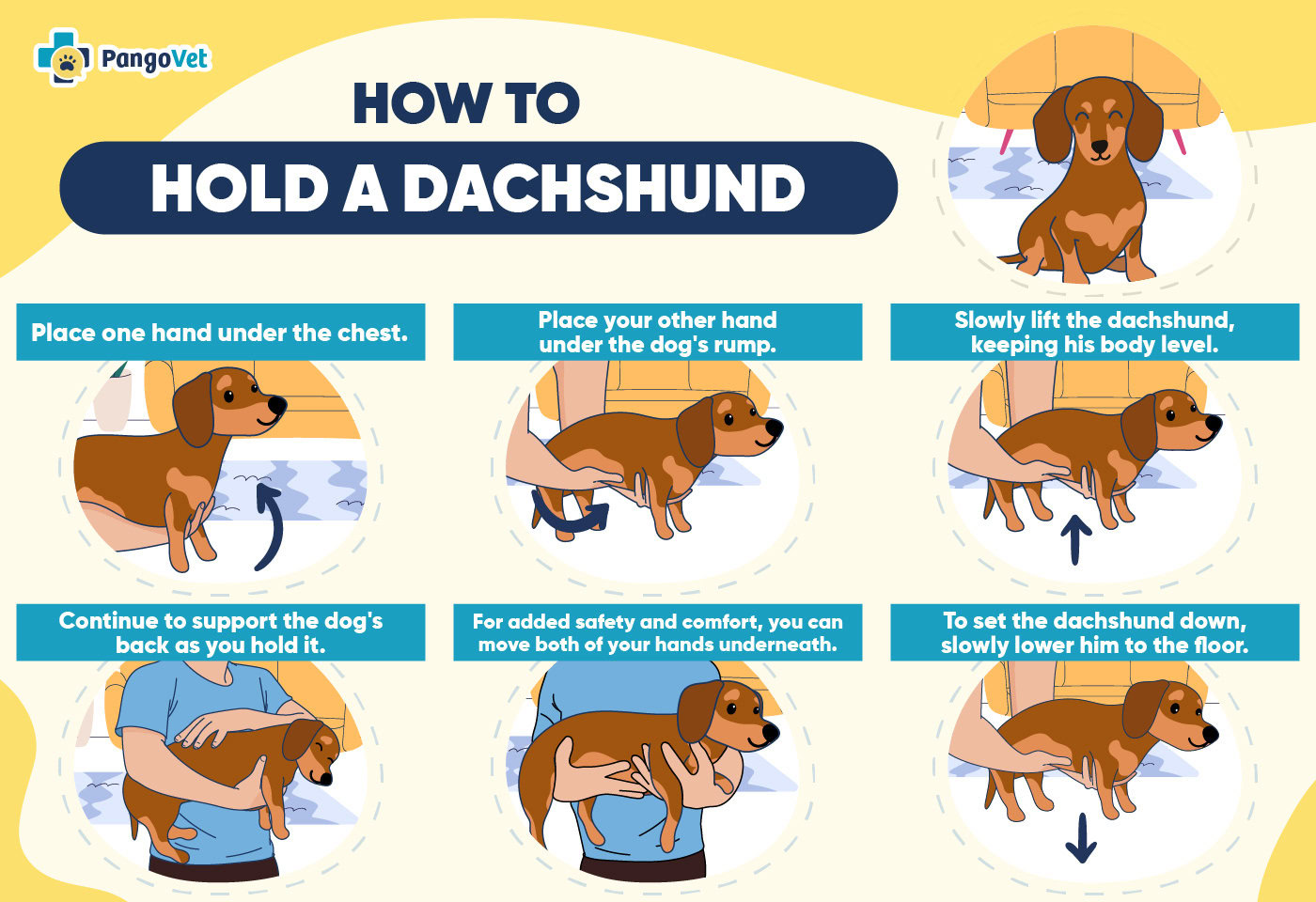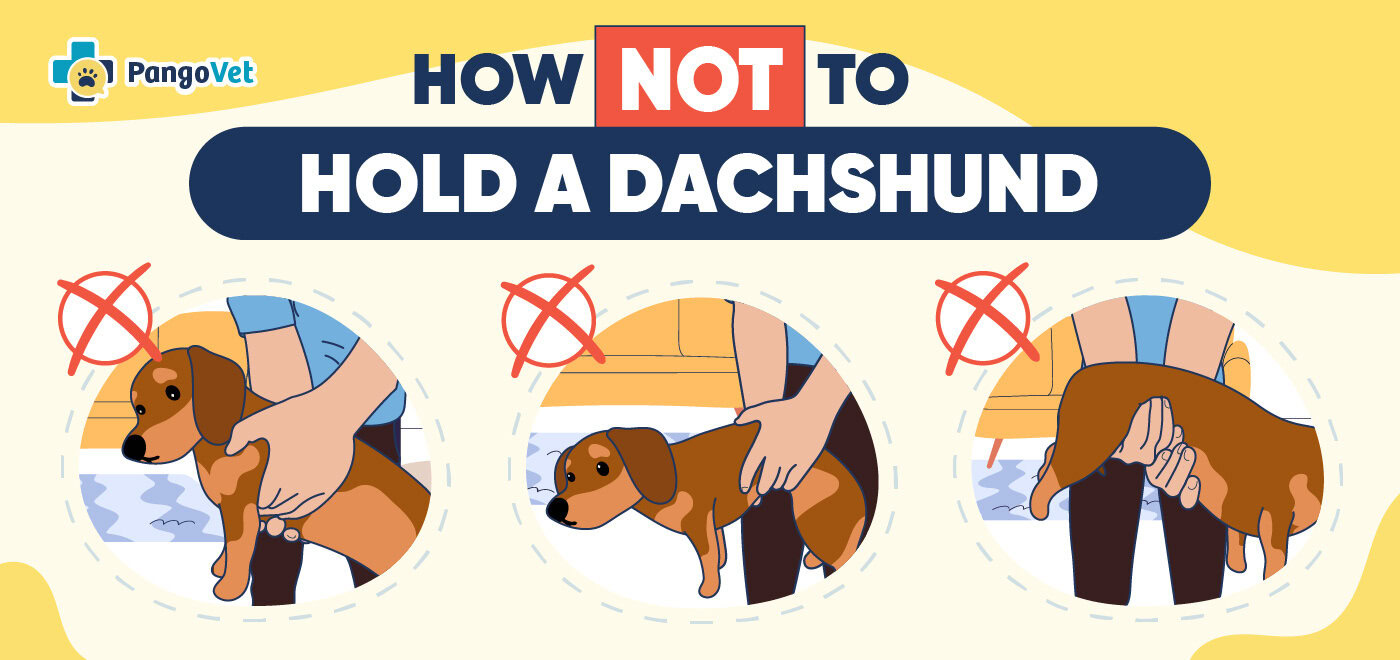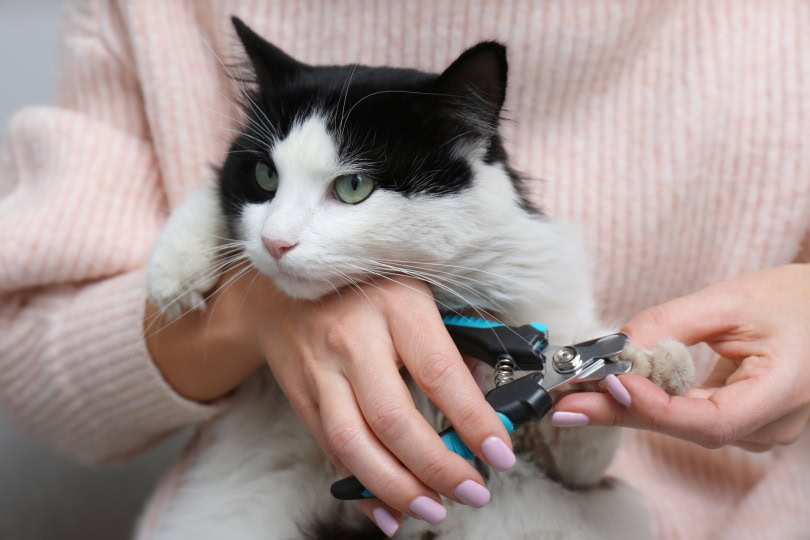VET APPROVED

The information is current and up-to-date in accordance with the latest veterinarian research.
Learn more »Click to Skip Ahead
Given their tendency to develop back problems, you might think that it’s best to take it easy on your Dachshund. Like all dogs, though, Dachshunds still need daily exercise, and it might surprise you to learn that the American Kennel Club actually classifies them as a medium-high energy dog. Healthy adult Dachshunds require a minimum of one hour of exercise daily, and this can include walking your Dachshund several times a day for no more than 3-5 miles altogether. Exercise should be versatile and involve off-lead playing and running around in a secure area, but avoiding jumping. Even so, their bodies aren’t built for long-distance marathons. You can let your hound “dash” at the dog park, but avoid strenuous activities such as 5 km distances, obstacle courses, and stairs, as jumping can lead to serious back injuries.

History of the Dachshund
Have you ever wondered about the Dachshund’s unique hot dog shape or curious name? The word “Dachshund” translates from German into English as “badger hound,” a name that pays homage to their native country and original purpose. The wiener dog was originally developed and bred by German nobles for badger hunting during the 17th century. Their long bodies allowed them to enter dens and burrows to chase their prey.
This hound wasn’t made to languish on the sofa. Even today, with their badger hunting days long behind them, Dachshunds are still recognized by the AKC as a hound dog with medium-high levels of energy. Without adequate exercise, your Dachshund could morph into a bored dog who barks incessantly and may even turn destructive as they hunt your slippers instead of a ball. Not to mention that a lack of sufficient and regular exercise tailored to the breed, which ensures building and maintaining a strong musculoskeletal system, may predispose them to back problems.

How Much Daily Exercise Does Your Dachshund Need?
Although the Dachshund has plenty of energy, you shouldn’t expect them to work too hard. Taking them on a 20–40-minute walk two to three times a day, as well as giving them the opportunity for free running and playing, should be enough to keep them healthy. If you only have time for one outing, try to walk them for around an hour. We recommend keeping your adventures between 1-3 miles per day to avoid overdoing it, but it will greatly depend on the dog’s age, size, health, fitness level, and lifestyle. Some healthy adult dogs may enjoy longer walks than this on a more regular basis, while puppies should only be allowed gentle exercise until they reach 12 months of age. On rainy days when walking might not be ideal, make sure you take the time to play indoor games and use puzzles to keep them physically active and mentally engaged.
Since they were bred as hunters, Dachshunds are rather quick. Indeed, wiener races are an Oktoberfest tradition around the globe. However, you shouldn’t let Dachshunds run in any sporting event until they’re at least 1 year old so that their bones, joints, and muscles can develop properly. After that, you really still shouldn’t involve them in long-distance races, or any high-impact activities, such as obstacle courses that involve jumping. As their German name coincidentally implies, the Dachshund is better at sprints and dashes than marathons.

Do All Dachshunds Have Back Problems?
The genetics that are responsible for the Dachshund’s adorable wiener shape, unfortunately, also put them at significant risk for developing back issues such as Intervertebral Disc Disease. This disorder affects Dachshunds at any age from 3 to 8 years old, while certain back troubles may also occur as they grow older. Regardless of the cause, an estimated 25% of Dachshunds eventually develop back issues that need veterinary care, and many of these end up requiring surgery so that they’re able to walk. However, there are things you can do to reduce their chances.


The 3 Things to Help Prevent Back Problems
1. Avoid Climbing Stairs Repeatedly
While it’s okay for your Dachshund to climb steps occasionally, walking up and down stairs too many times on the regular can injure their back. If you live somewhere where you must climb several flights of stairs daily, such as on the top floor of an apartment complex, you might want to consider carrying them or taking the elevator.
If you are concerned about the health and well-being of your pet, seek veterinary advice for the best course of action.
2. Make Sure They Receive Plenty of Exercise to Prevent Obesity
Dachshunds require a fine balance between activity and rest to stay in optimum shape, depending on their age and health. While you want to avoid any over-activity, you should ensure they go on daily walks as well as play and run off lead in order to build strength and prevent obesity. Excessive weight gain puts extra pressure on their joints just as badly as over-activity, and the extra pounds can contribute to other health problems such as diabetes, arthritis, breathing problems, and others.
3. Don’t Let Them Jump On and Off Tall Furniture
You might want to invest in a pet ramp to help protect their back. If ramps aren’t an option, you can limit their activity by crating them while you’re gone or partitioning off part of the house so that they’re not tempted to spring up onto the king-sized bed.


Conclusion
While you should wait until they’re at least a year old before increasing their exercise, you should include your Dachshund in your daily exercise routine as soon as possible. Dachshunds are relatively active dogs that ideally need a 20–40-minute walk two to three times a day, as well as off-lead playing and running around. If your schedule doesn’t allow for two different shifts, aim to walk for up to an hour, covering 1-3 miles but no more than five miles to avoid overexercise. Taking prevention steps such as limiting their access to stairs, avoiding jumping up and down, and maintaining a proper weight will also help keep your Dachshund in prime condition and reduce their risk of back injury.
See Also:
Featured Image Credit: Ryan Brix, Shutterstock












